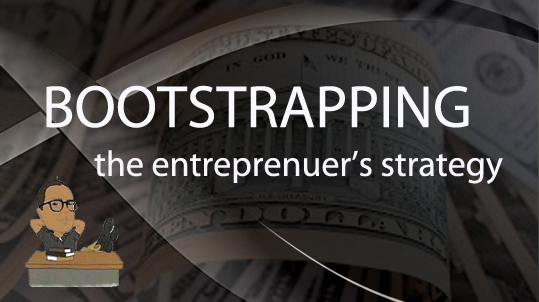The Entrepreneurs Financing Technique for Startups
You are thinking about starting a new small business. To you, your business idea is compelling. However, money is tight. How do you finance yourself? One technique is referred to as bootstrapping. Without self-financing or funding from friends and family, money earned from customers must be plowed back into the business.
Bootstrapping is important for new and small businesses. Among other things, on average, many companies develop and flourished through the use of bootstrapping without access to long-term external financing, over a five-year period. Many studies demonstrated the important role played by bootstrapping. A large percentage of the businesses examined used bootstrapping to secure resources. These companies had reduced dependency on external financiers for capital.
Access to capital continues to be tight. In a third quarter survey of lenders, the majority of lenders identified uncertainty as their chief concern regarding future economic growth. Less optimism was shown for opportunities of their borrowers, indicating a slight pullback in their own customer growth expectations and a reduction in new capital investments and hiring expectations. Respondents were asked whether they plan to tighten or maintain their loan structures i.e., collateral requirements, guarantees, advance rates, and loan covenants. Accordingly, in each of the four loan structures, 82 percent of lenders anticipate maintaining their loan structures in their in the near-term, which showed a slight shift towards tightening loan standards. For the entrepreneur, use of bootstrapping techniques will continue to play an important role in funding operations.
Bootstrapping can be grouped into three types.
- Cost-Reducing
- Capital (Money)-Constrained
- Risk-Reducing
Ten tested and widely used bootstrapping techniques ( include:
- As an entrepreneur, save personal costs by wearing multiple hats in managing the business.
- Equipment and furniture does not have to be new, acquire or lease used assets in operating the business. Also be cognizant not to over pay for service warranties.
- Use a large company to lower costs by sharing office space or subleasing. Try to get access to conference rooms, reception services, and office equipment such as copy machines, etc.
- For short-term working capital, apply for several credit cards at once and use the unused credit limit as an operating line of credit.
- For inexpensive human resources, utilize the services of retired executives that desire to stay busy and remain “in the game” as mentors. The U.S. Small Business Administration’s Service Core of Retired Executive Program (SCORE) is a great source for such experienced executives. Additionally, hire students that are willing to sacrifice salary to gain experience that can enhance their future. Go to: http://www.score.org/
- Maintain excellent customer relations with key customers to encourage them to pay early.
- For maximum flexibility and cost controls, commit only to short-term obligations and leases.
- As a means of fulfilling a contract, have your major customers acquire the equipment needed to meet the contract and lease the equipment.
- Depending on state and federal securities laws, use the company’s shares in lieu of cash with your vendors (i.e., suppliers, landlord, etc.) and professionals (i.e., lawyers, accountants, specialists). Keep in mind the dilution ratio you will be giving up and remember put forth a stock buyback terms. The company’s shares are not liquid. Offer them a means to “harvest” their investment with you. Think of the Sam Walton former executives and initial office employees. They became multimillionaire with the startup of Walmart.
- To acquire and gain access to key products and services utilize commercial barter exchanges.
The bottom-line, bootstrapping require a mindset to focus on cash flow and profitability to remain in business. Without external funding, you as an entrepreneur cannot waste money. Your startup business must make money or generate sufficient cash flow to survive. And if you are looking to venture-finance or angel-funding, your startup business must stay afloat until funding is captured.
You as an entrepreneur have an explicit motive for using bootstrapping techniques. The deliberate choice of using bootstrapping strategies can be seen in proactive ways from reduce risks, restricting expenses, and funding business activities. Such techniques allow for business opportunities without the need to own a sizable resource base and without the need to source external financing. These methods minimize the need for cash by obtaining resources at little or no cost. Additionally, the use of resources can be acquired without the need for bank financing. Overall, entrepreneurs can utilize their social contacts to obtain free access to specific resources.
